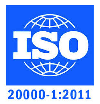Small businesses have many fascinating reasons to outsource, which include saving money, improving performance, avoiding recruiting headaches, etc. Despite the apparent benefits, many companies need help figuring out how to get started with outsourcing and may be reluctant to begin.
However, when you choose the appropriate outsourcing partner, you can economically facilitate your business processes and function more ably. Outsourcing can also offer your company personnel with particular expertise that would be too cost-prohibitive to maintain with an in-house employee.
Let’s explore how outsourcing works and how you can successfully outsource your specific functions to focus more on engaging customers and to grow your business.
How does outsourcing work?
Outsourcing involves engaging an outside company or independent contractor to carry out tasks as an in-house team member would otherwise.
However, some companies outsource more crucial tasks, along with human resources, customer service, payroll, and Information Technology.
If you’re thinking of beginning the outsourcing process, follow the following steps:
- Decide which tasks to outsource:
Your first step is determining which tasks you wish to outsource and which to keep in-house. Businesses typically consider the following:
- Outsource back-office tasks. Many companies outsource back-office functions critical to operations but don’t help your business expand. While you can’t desert accounting, human resources, payroll, and other supporting roles, these tasks don’t bring in new clients and revenue. While necessary, routine tasks will disrupt an in-house team’s time and attention.
- Outsource tasks for specific skills. Businesses also outsource jobs that need talent or skills they don’t have in-house. For example, business owners may outsource website designing and development tasks instead of engaging an employee or adding it to the IT team’s tasks.
Outsourcing offers the best result when you have fixed goals and structured processes and know accurately what functions you want to unload.
- Write clearly the outsourced function’s job or project description.
- Produce a detailed write-up of the exact functions you want the outsourcing company or the independent contractor to achieve.
- Publish your job or project description on freelance websites such as Upwork, Outsourcely, or Fiverr or design a request for proposal (RFP) and send it to top selected companies. When you mention all your expectations and demands in the job description, many incapable companies won’t apply for it, saving you time and sorting through and assessing applications.
- Assess your outsourcing applicant.
Once you post your job description or circulate an RFP, you’ll start getting replies. Responses may be as simple as a Fiverr applicant sending a report of their abilities and charges or as detailed as a custom proposal from a well-established enterprise.
When assessing your replies, it’s suggested to consider the following factors:
- How closely does the company’s potential match the job description requirements?
- How long has the company been in business?
- How experienced is the company in doing this sort of task?
- What kind of certifications, reviews, or other social proof does the company have to back up its credibility?
- How well does the company’s response show that they understand the job or project?
- How is the company’s communication? Is it clear, understandable, and free of errors?
- How is the price compared to other outsourcing companies? Is the value they offer more or less than competitors?
After reviewing applications and proposals, choose the company you feel is the best fit.
- Track your outsourcing partner’s tasks and expenses.
To stay abreast of project timelines and expenses, request outsourcing companies to use time-tracking software that you can access. They should record their time for each task to give you an understanding of their time and economic productivity. Recording duties and costs can help you comprehend when more communication is required and whether outsourcing with this particular company is worth it or not.
How does outsourcing help your business grow?
Outsourcing enables companies to concentrate on their clients and uplift internal resources for expansion. Here are some ways outsourcing can help grow your business:
- Outsourcing reduces employment costs. Outsourcing significantly cuts employment costs, including recruitment, wages, and perks (since outsourcing companies don’t need employee benefits). There are no employment taxes to be paid, and outsourced employees usually have their computers, office space, and other overhead costs already taken care of.
- Outsourcing lets you label payroll to revenue producers. Outsourcing leads to greater efficiency because it allows businesses to engage top talent in their crucial revenue-producing spheres, which includes sales, marketing, and core operational tasks.
- Outsourcing brings more value to your dollar. Top-quality outsourcing partners who use offshore talent can often deliver extraordinary performers at a lower cost. Outsourcing also implies that you don’t have to worry about recruiting, training, or retention because, usually, the outsourcing partner directs those functions.
- Outsourcing provides lower rates for monotonous tasks. An outside company or a freelancer can generally manage tasks like data entry and invoicing at much lower rates than you’d pay to your in-house employees.
Many companies require customer support assistance, but building an in-house call center would waste resources. It might make sense to outsource to a call-based customer assistance company with the groundwork, training, hiring covenants, and management process already in place. Outsourcing benefits by saving on equipment and technology expenses.
Conclusion
If your goal is to emerge and expand, imagine how helpful it would be to work with leanness and agility. By working with an outsourcing provider, you’ll work with high-caliber experts for reduced costs. Outsourcing is a big decision and an endeavor you must approach with careful consideration and planning. However, in the end, many companies find the results are 100 percent worth it.









